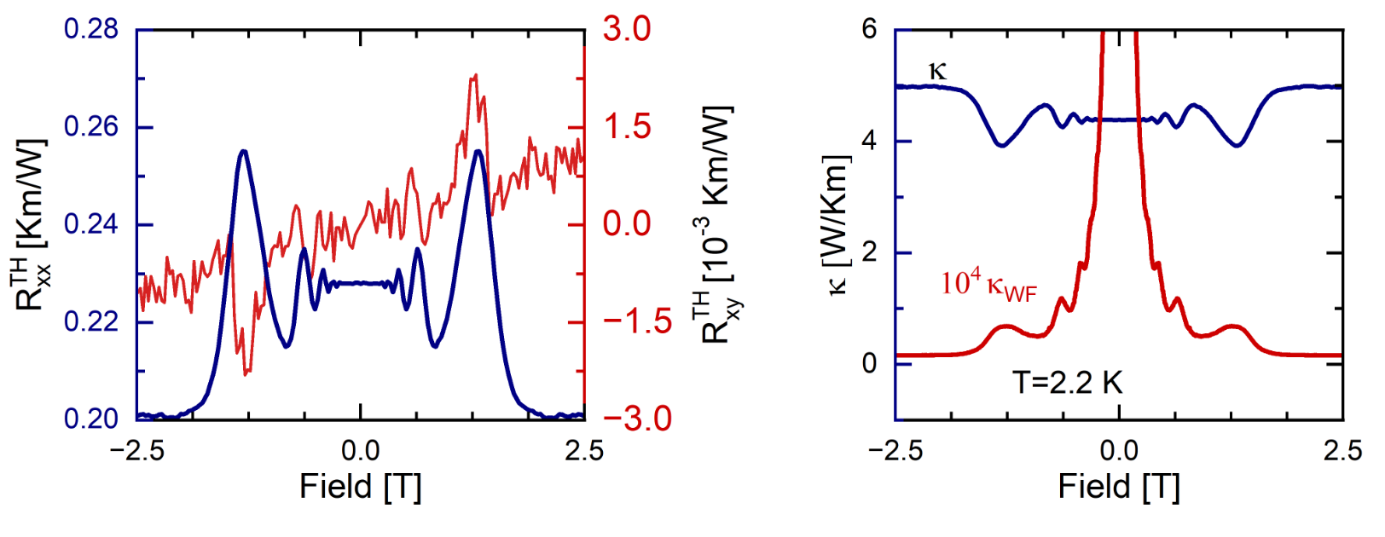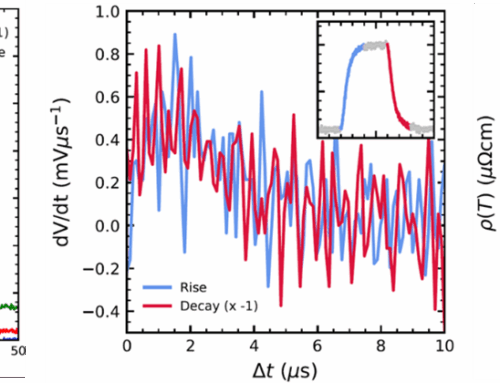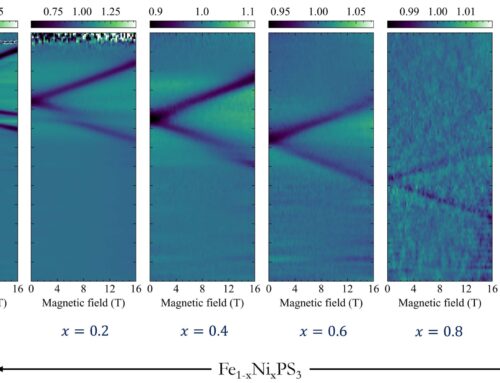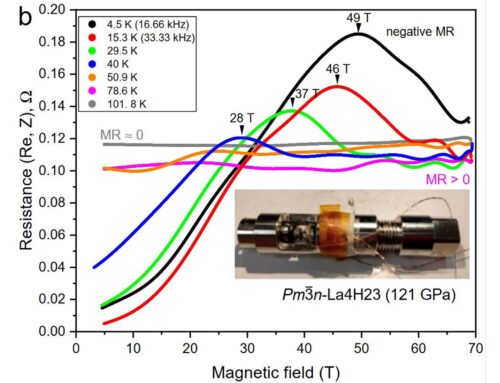Stanislaw Galeski, HLD and HFML-FELIX.
The ability to transport heat is one of the most fundamental properties of matter, crucial for engineering applications. In most materials, at room temperature transport is well understood. Things, however, are not as straightforward under extreme conditions such as temperatures close to absolute zero or in strong magnetic fields, where quantum effects begin to dominate.
When a conventional metal such as silver or copper is exposed to strong magnetic fields at low temperatures its thermal conductivity is expected to exhibit oscillations – a striking example of quantum-mechanical dynamics of charge carriers in metals. This effect arises due to the existence of the Fermi surface, the boundary between occupied and unoccupied energy states of electrons in a metal. On the other hand, in semimetals, there are very few electrons available to transport heat and as such the thermal conductance is expected to be dominated by phonons – emergent quasiparticles that represent crystal-lattice vibrations. As such, quantum oscillations should not appear in the transport of heat here. However, several recent experiments have detected giant quantum oscillations in the thermal conductivity of semimetals, questioning the mechanism of heat transport.
The present study demonstrates that this phenomenon stems from a very counterintuitive mechanism for transport of heat in strong magnetic fields in semimetals. It turned out that indeed thermal transport is by far dominated by lattice vibrations. However, due to the presence of strong magnetic fields the electron energy states become confined into discrete energy levels. This process dramatically enhances the electron-phonon scattering leading to quantum oscillations in the lifetime of phonons and thus to the appearance of quantum oscillations in the thermal conductivity of phonons.
We have corroborated the existence of this unconventional phenomenon through the study of the thermal conductivity and ultrasonic attenuation in the semimetal ZrTe5 in strong magnetic fields and temperatures only a fraction of a degree above absolute zero. In our experiment, we have detected clear thermal quantum oscillations with a frequency characteristic of the electron sub-system (figure). However, the temperature dependence of their amplitude clearly followed the characteristic behavior of the phonons.
Remarkably, our findings are not only applicable for ZrTe5, but as well for a wide class of semimetals with low charge-carrier density, regardless of whether they are topological or not, including famous examples such as graphene and bismuth. They suggest that thermal conductivity of lattice vibrations can serve as a sensitive tool to study subtle quantum effects that could be barely detectable via other means.

Figure: (Left) Transverse thermal magnetoresistance and thermal Hall effect measured on a ZrTe5 crystal at 2 K. Oscillations of thermal resistance amount to almost 20 % of the total resistance. (Right) Comparison of the transverse magnetothermal conductivity with the estimate based on the Wiedemann-Franz law. Oscillations seen in the measured thermal conductivity appear almost 4 orders of magnitude larger than expected.
Giant quantum oscillations in thermal transport in low-density metals via electron absorption of phonons, B. Bermond, R. Wawrzynczak, S. Zherlitsyn, T. Kotte, T. Helm, D. Gorbunov, G. Gu, Q. Li, F. Janasz, T. Meng, F. Menges, C. Felser, J. Wosnitza, A. Grushin, D. Carpentier, J. Gooth, and S. Galeski, PNAS 122, 2408546122 (2025).
https://www.pnas.org/doi/10.1073/pnas.2408546122
Contact: sgaleski@science.ru.nl






